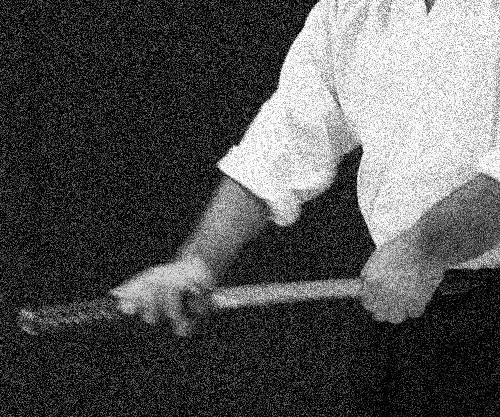Nukitsuke (抜き付け) with Concept
To reduce the essence of Iaido to merely the fast drawing of the sword is one-dimensional. However, the first action must be immediate. This is essential to overcome an equally active opponent. A clean Nukitsuke (抜き付け) conceals your true intention and ability. It appears unexpected, direct, and with asymmetrical force. Yet, this initial move of a kata holds diverse concepts that extend far beyond mere speed. Therefore, we will explore these concepts in more detail here.
Sen (先): The art of initiative
In Japanese martial arts like Iaido and Kendo, the concept of ›Sen‹ is central to timing and tactics. Sen (先 – Initiative, Before, Leadership) takes the initiative at the decisive moment. It’s less about sheer speed and more about perception, timing, and mental presence.
There are three main stages of ›Sen‹. These define the timing of one’s own action in relation to an opponent’s action.
1. Sen-sen-no-Sen (先々の先): The initiative before the initiative
This is the highest and most demanding form of initiative. It means sensing the opponent’s intent and acting before they even begin their attack. You act even before they’ve definitively made the decision to attack or before their aggressive intent has manifested. In essence, you intuitively ›read‹ the opponent.
This concept is about recognizing a mental gap. For instance, you might see an uncertainty or an indecisive movement in the opponent’s mind. The attack occurs when the opponent is not yet fully mentally prepared or is just gathering their aggressive energy. Consequently, your own move nullifies the opponent’s (not yet fully manifested) aggressive intent.
How do you recognize the moment? The opponent is just starting to change their breathing or show a minimal tension. This indicates an impending attack. Use this moment to execute your own move decisively. In doing so, you stifle the opponent’s attack in its infancy. In essence, it is an attack on the ›idea‹ of the opponent’s attack. This concept is primarily pursued in Kata Mae, Shohatto, Yokogumo, Kazumi or similar situations.
2. Sen-no-Sen (先の先): The initiative within the initiative
In Sen-no-Sen, you act precisely at the moment the opponent begins their attack. Or you act in the early phase of its execution. Your reaction to the first visible movement or sign of the attack is to initiate your own attack. Your goal is to overtake or interrupt the opponent.
The opponent has manifested their aggressive intent and begins to move. You exploit this movement and the resulting opening (Suki). This is a timing where your own attack crosses or intercepts the opponent’s before it can fully develop its effect. For example, the opponent is just raising their sword to strike. You react immediately by launching your own cut or thrust. This hits the opponent before their own strike is executed. You effectively steal the initiative from them in the flow of their attack. You can practice this effectively in Kata Morotezuki, Inyoshintai.
3. Go-no-Sen (後の先): The initiative after the initiative / counter-initiative
Go-no-Sen means seizing the initiative after the opponent has executed their attack. Or it is used after their attack has missed, been blocked, or been parried. It is a counter-action that exploits the opponent’s loss of balance, open stance, or exhaustion after their attack. For instance, you absorb the opponent’s attack, parry it, or evade it. Then you use the moment of the opponent’s opening or unbalance to launch your own decisive counter-attack. It’s a defensive reaction that transitions into an offensive takeover of control.
However, Go-no-Sen isn’t the most popular idea in Budo. This is because you lose the initial initiative. Reacting diminishes your chance of victory. The opponent strikes, and you evade, parry, or block the blow. The moment the opponent’s strike has passed, you execute your own counter-attack. This concept is evident in various Kata: Kata Ukenagashi, Soogiri, Gyakuto, Nukiuchi etc.
Practical examples from Kendo
Conclusion
These three concepts of ›Sen‹ are fundamental to understanding timing, distance (Ma-ai), and mental composure. A good Nukitsuke as the first action relies on them. In Iaido, it is also fundamentally important to execute the action without interruption or gaps in the flow of movement. This demands full presence and unwavering attention.
